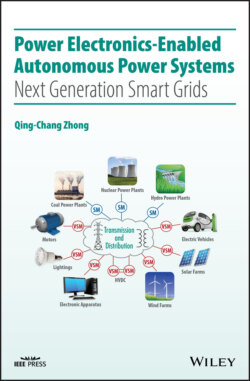Читать книгу Power Electronics-Enabled Autonomous Power Systems - Qing-Chang Zhong - Страница 47
2.8.2 SYNDEM and Chinese History
ОглавлениеThe concept of SYNDEM smart grids also has deep roots in Chinese history2. During the Spring–Autumn period (approximately 771 to 476 BCE) and the Warring States period (approximately 475 to 221 BCE) of ancient China, China was in the form of multiple states. It was an era of great cultural and intellectual expansion in China, when hundreds of schools of thought and philosophies flourished. Among them, the most influential thoughts included:
Taoism – established by Lao Tze (571–471 BCE) with the core principle of living in harmony with nature.
Confucianism – established by Confucius (551–479 BCE) with the core principle of being inclusive and kind.
Legalism – established by Li Kui (455–395 BCE) with the core principles of governing with laws.
Mohism – established by Mo Tze (470–c. 391 BCE) with the core principle of thinking with logic.
School of Yin‐Yang – established by Zou Yan (305–240 BCE) with the attempt to explain the universe in terms of basic forces of Yin‐Yang and the Five Elements of metal, wood, water, fire, and earth. Later, this was adopted by Taoism, Confucianism, and the Chinese medical framework.
It is fair to say that China was highly democratized during the Spring–Autumn and Warring States period, for over 500 years. People could move freely from one state to another and enjoyed freedom of speech. The most powerful states often held regular conferences to decide important matters. The thoughts and ideas refined during this era then became the cultural foundation of China and other East Asian countries.
However, it was also an era filled with chaos and bloody battles. During the Spring–Autumn period, there were nearly 500 battles, i.e. two battles a year on average. The Art of War, an ancient Chinese military treatise of strategy and tactics, was written by Sun Tze around 515–512 BCE, during the Spring–Autumn period. During the Warring States period, as the name of the period indicates, there were also many major battles among the states.
In 221 BCE, Emperor Qin (Chin) united China and harmonized Chinese characters, currency, trade (weights and measures), and communication (transportation). This laid a structurally stable foundation for China for many years to come, demonstrating the power of harmonization and unification. Harmony has then become the most important principle of Chinese culture, cultivating peace, stability, prosperity, and sustainability.
What future power systems need is a structurally stable foundation to enable natural growth and operation. This is exactly what the SYNDEM theoretical framework offers.
